When most people think of marketing, they picture large billboards, telemarketers, unsolicited mail, and aggressive television and radio ads. This is called outbound marketing.
This is the traditional way of doing things, but it isn’t working anymore. People in the digital age are used to distractions and have become better at avoiding them — skipping advertisements, leaving mail unopened, and effectively proving that marketing budgets that focus on an outbound methodology are often wasted.
Digital marketing has changed things. To attract leads nowadays, you have to focus on providing value to them in the digital space, gaining their trust through the inbound marketing methodology.
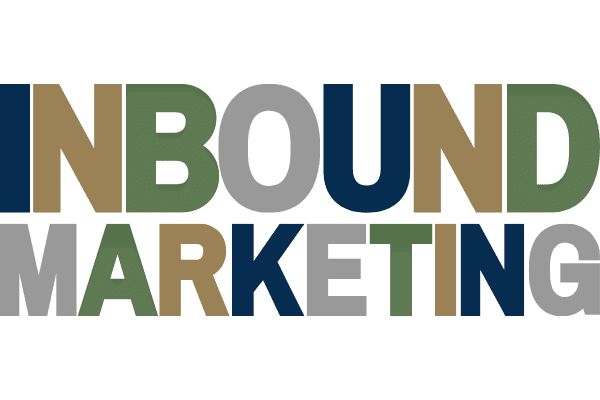
According to Hubspot, "Inbound marketing is an approach focused on attracting customers through content and interactions that are relevant and helpful — not interruptive." In other words, inbound marketing is about providing value to leads before they even become customers. This most often comes in the form of digital content that answers the questions your leads have and brings them to your business.
"By creating content designed to address the problems and needs of your ideal customers, inbound marketing attracts qualified prospects and builds trust and credibility for your business." - HubSpot
Jump to:
In our opinion, inbound marketing empowers the customer and is a far cry from traditional marketing methods that often leave customers feeling taken advantage of. Inbound marketing is a more wholesome approach that nurtures leads until they are hot, which is very effective for industries with longer sales cycles. This is why at Builder Funnel, we use the inbound approach to help builders and remodelers attract and guide leads through the sales funnel with helpful digital content. As a result, these leads are often self-qualified and ready to get to work before they even speak to someone in sales.

Now that you know what inbound marketing is, here are three key reasons why it works.
As you may have noticed, the customer research and buying processes are much different than they were 20 or even 10 years ago. The internet has opened the doors for consumers to do their own research on products and services and has taken power away from salespeople.
Formerly, a prospective customer of the home building or remodeling industry would hear about a business, typically from word of mouth or outbound marketing (things like signage, radio and newspaper ads), and need to call a salesperson to acquire more information about the process, pricing, and other pertinent information to their buyer’s journey. Then they would decide who to work with and make the purchase.
In today’s market, however, the internet has given buyer’s the power. Consumers have easily accessible resources to do their own research on organizations long before they talk with a salesperson at your company. Have you ever looked up the price of a product while standing inside a competitor’s store and decided to buy from elsewhere? That’s the power available to modern buyers. While word of mouth is still a significant contributing factor to the home construction industry, consumers are increasingly finding (& evaluating) businesses online without meeting you in person.
If consumers are doing their research online, how can home builders and remodelers capitalize on the consumer’s drive for information? The answer is simple: create content based on what the user wants to know. Most inbound content is created for the sole purpose of informing consumers about topics they want to know more about in a truly helpful way. Knowledge builds trust in your company organically, and a single piece of content can inform and build trust with dozens of consumers.
Imagine you were looking to build a home in a specific area, and you came across all these helpful articles explaining the process, timeline, cost, design, floor plans, and more from a builder in your area. You did further research and found a couple of other local builders. But you already have a better understanding of what to expect with the builder who provided you with answers to your top of mind questions. Which builder do you trust more? Which builder will you call first to request a consultation?
Inbound marketing naturally creates brand awareness. We’ve seen inbound marketing work with our own business and with the home builders and remodelers we serve to build brand awareness. Did you know that on average a consumer needs to see your brand and offerings seven times before they notice your brand or take any sort of action? Inbound marketing tactics typically help you reach the seven times rule faster and cheaper than traditional advertising sources.
If consumers are constantly seeing your brand over competitors because you meet consumers where they spend time and research (online), your business will be top of mind when they need your services or when they hear that their friend is looking for a builder or remodeler in the area. This fact becomes crucial when we think about how long the buying cycle is for a home or a remodel. If someone isn’t quite ready to purchase yet, you’ll want them to remember your brand when the time finally comes to make a buying decision.

Whether you are a home builder, remodeler, or contractor, inbound marketing is essential to the long term success of your business, and here’s why. Inbound marketing responds to the pain points of potential customers. Digital content in the form of social media, blog posts, etc. that answers your target audience’s most pressing questions boosts your business’ presence in the digital space and lures potential customers in, while gaining their trust throughout the entire process.
There are two persistent factors that negatively impact the sales process for home builders and remodelers: 1) The sales cycle is long (sometimes years), and 2) customers in this industry have so many questions — there is a huge trust gap in this industry. Inbound marketing responds directly to both of these issues:
Because the sales cycle in the construction industry tends to be so long, you need a way to gain and keep their trust while helping them through their buyer’s journey. Inbound content does this, and because it answers their questions in the meantime, it also allows leads to self-qualify, which shortens the sales cycle and frees up your sales teams to develop relationships with bottom of the funnel leads.
This is part of the reason the sales cycle is so long in construction: potential clients have a huge decision to make and so many questions. By using digital content to answer their most pressing questions and teach them about the costs, the common issues, and the process itself — even answering questions they didn’t know they had — you are removing confusion and friction and in turn nurturing them into more decisive, qualified leads. And once they make their decision to buy, because you have already been helping them the whole time, you will be their first choice for a contractor to work with.

Inbound marketing, when implemented as a system across your business and not just in a vacuum, provides both short term and long term value. With advertising and outbound marketing, your ad spend is a linear correlation to traffic and leads - meaning the more you spend, the more traffic and leads you get in proportion. The marketing value from anything you spent yesterday is now gone. Inbound marketing is not linear, it’s exponential and the money you invest into inbound content and promotion now will benefit you tomorrow, next month, next year, and for years to come. Given the stark difference between advertising and outbound marketing, here are some principles of inbound marketing to keep in mind:
It is crucial to your long term success that you are consistent and intentional about publishing helpful, quality content. In many ways, the discipline of inbound marketing feels a lot like forming a new habit. At first it feels off, and you may forget every so often, but over time the habit becomes part of your routine, and you don’t even think about it anymore. Similarly, inbound marketing at first can feel off if you’re not used to talking to customers so openly about costs, your process and timelines, and best options for the customer (that may not be the most ideal option for you). BUT over time these tactics will become part of your business routine, and it will seem weird to NOT be doing it.
Content is especially relevant now that digital marketing is basically required for business visibility and growth. Blog content, website page content, landing pages, eBooks, graphics, videos, podcasts etc. are the primary forms used to communicate your message and inform your prospects and customers. You are also feeding search engine crawlers — like Google bot — content to serve to researchers. Search engines do not exist without content, so they want to be fed good quality content to stay in use.
The primary focus of your content should always be to answer user intent and provide a quality user experience. Google uses over 200 ranking factors to evaluate a page’s rank position, but at the end of the day, these all come down to answering user intent and achieving a quality user experience.
Crafting inbound marketing content is not a “build it and they will come” situation. If you take that position, you will be very lonely in your newly built content fortress. With your quality content in hand, you then have to promote it! Fortunately, you have many avenues where you can promote your content, including:
You have to remember to put your content to work for you by saving most of your time and energy for promoting it, rather than on creating it.
To reiterate: when it comes to content, consistency is key. Let us show you why:
For one of our clients, we started from content ground zero, creating four articles with 1,000+ words per month. To supplement publishing this new content, we promoted each blog via emails (or “eBlasts”) to the client’s email list. Four months and 15 blogs later, our client’s blog traffic went from 0 to over 250 visits per month!
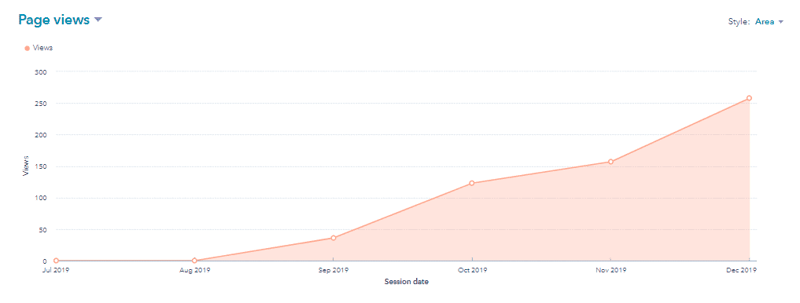
Here’s another example. For this client we published two 600 word blogs per month. Not only has their blog traffic seen exponential growth, their entire website’s organic traffic (not just the blog) exhibited 30% month over month increases, as seen below.
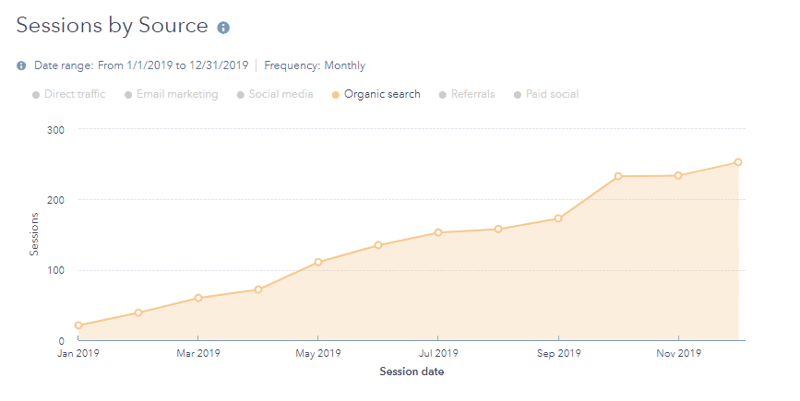 Consistent inbound marketing with proper promotion can benefit a business quickly and over the long haul.
Consistent inbound marketing with proper promotion can benefit a business quickly and over the long haul.
Notice with the examples above: even though the results of inbound marketing were drastic, they were also gradual, taking place over the course of several months. Inbound marketing is not advertising; it’s an investment and a long term strategy. When it comes to inbound marketing, make sure you begin with the appropriate expectations:
Don’t expect to start ranking on page 1 automatically. The Google algorithm is complex, and there are trillions of indexed pages on Google. (Not millions, not billions, trillions. That’s thousands of times more pages than there are people!)
Your first few new content pages will not have high visibility from the start. You have to drive people to your web pages (via promotion) in order for Google to start tracking user engagement with your pages and assign your website a higher ranking value. In other words, it’s going to take a little while for Google to notice the quality content your website has. But if you are consistently creating and promoting useful content that readers enjoy, Google will start to notice. Ranking number 1 is a war of many battles, but it’s a war worth rallying to win.
So maybe website visitors are starting to engage with your content and even give you their contact information on lead conversion offers. This does not mean they are all ready to talk to you. Many potential clients will still be in the early stages of their sales process. They may not even know if your service is right for them yet.
You should expect top of the funnel leads to be less apt to talk. Top of funnel leads will need to be nurtured and guided (with your content) toward the later stages of the sales process. Bottom of the funnel leads, on the other hand, will be much quicker to respond to sales calls. Just make sure you know who’s who.
So when will you see results from inbound tactics? The real answer is - it depends. Google alone has over 200 ranking factors that your content is evaluated by, and they are just one piece of the pie!
However, most home builders, remodelers, and contractors that work with an inbound marketing agency with a comprehensive plan will begin to see results in under six months. And the best thing about inbound marketing results? They compound over time. All of the content you create stays with you and will continue to work for you indefinitely! They don't just go away when you stop paying (unlike with advertising). Inbound marketing is an investment; advertising is an expense. You can measure the ROI of both, but only one continues producing ROI after the check has been cashed.
Inbound marketing is an investment; advertising is an expense.
So do the results take longer to appear? Yes. Is it worth the wait? Absolutely!
Just as with low-risk investment principles, such as investing in retirement accounts, inbound marketing builds on itself to generate a sustainable system that you can rely on, both now and in the future. If you are starting a retirement account today, you already know a couple of things:
These principles are one and the same when it comes to inbound marketing:
When you decide to invest in inbound tactics, you still have to start somewhere. Next we will discuss the primary components of inbound marketing that you can use to start focusing on your business’s future.
Inbound marketing is more than just social media and emails. There are several components involved with an effective, holistic inbound marketing strategy.
Each of these digital marketing components functions differently, but when utilized correctly they all work together.
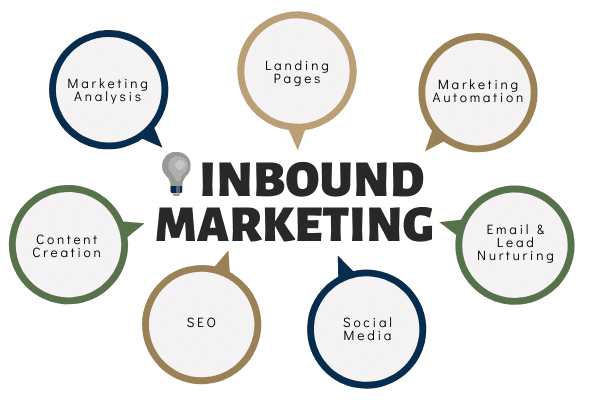
Now that you understand inbound marketing and how it can work for your business, you may be wondering how you can best measure your efforts to calculate important marketing metrics such as return on investment. Luckily, unlike many forms of traditional advertising, there are tons of data points at every step of inbound marketing practices.
Inbound marketing produces a lot of data and it could be overwhelming at first, but once you know what to look for, it will be easy to pull the data you need and evaluate your inbound marketing strategies for efficiency. So which metrics should you be looking at for your inbound marketing campaigns?
Well, the data you focus on will be largely dependent on your goals. For example, if your goal is to gain more leads, some key metrics you might evaluate include the number of website sessions, form submissions, and conversion rates on your website page. If your goal is to increase brand awareness you might instead look at your website traffic sources and social media information. Here are a few top metrics you can track to evaluate your inbound marketing:
Views are simply how many times a specific website page has been viewed online. Views are helpful to understand what content is of most interest to your audience and which pages are likely ranking well in search engines. To gain further insight into where users are coming from, you can view “sessions by source” metrics.
What does it mean to think of leads by source? This means looking at how leads are finding you and your website. In other words, the lead source is how the lead found you. Common sources include organic traffic, direct traffic, PPC traffic, email traffic, and social media traffic. Knowing where leads comes from (and where they don’t) can help inform what marketing activities you invest more or less into each month.
Session length is the amount of time a user spends on a specific page on your website. This metric is often shown in seconds unless the average time spent on page is longer than a couple of minutes. Session length helps you determine how relevant and useful your content is to the users who land on your website page, but this metric can be misleading. For quickly answered topics, there may be less content on the page, which means a user typically has a shorter session length. On the flip side, if a user stumbles across your site looking for an in depth answer to their question and you provide that answer, the user will likely spend more time on your page and increase your session length.
A separate, related metric to consider is the number of sessions a reader has. If you can see that the same people are returning to read your content, this is a great sign you are doing something right! Keep in mind, though, more often than not searchers can usually find their answer quickly via Google’s featured snippets and then move on without ever clicking into any search result.
Conversion rates are determined based on the number of views to conversions (usually via form submissions or purchases) on any given page. Converting on a website page means the user visits the page and decides to enter their information (typically for something in return like an eBook, checklist, or guide) or make a purchase. When the conversion rate is calculated it’s represented as a percent and then you estimate what percentage of people visiting the page will convert in the future as well. For some perspective, across industries, the average conversion rate is around 2.35%.
A related metric to consider for website pages is the Click Through Rate (CTR) which shows what percentage of people are clicking on your Call-to-Actions (CTAs) specifically. Obviously, higher is better, and if yours are performing below 3–5%, it may be time to update them.
The bounce rate is the percentage of people who left your website entirely after viewing only one page, or abandoned while they waited for the page to load. This is one metric where lower is better. The best way to decrease your bounce rate is:
Some CRMs allow you to categorize each piece of content you create by campaign (e.g. all your roof remodel content would be under the “Roof Remodel” campaign). Most CRMs also include ways for you to track the estimated influenced revenue of each campaign you run, so you can gauge their success and know which campaigns should be honed in on, and which should be revised — or, for the lost cause campaigns, ignored.
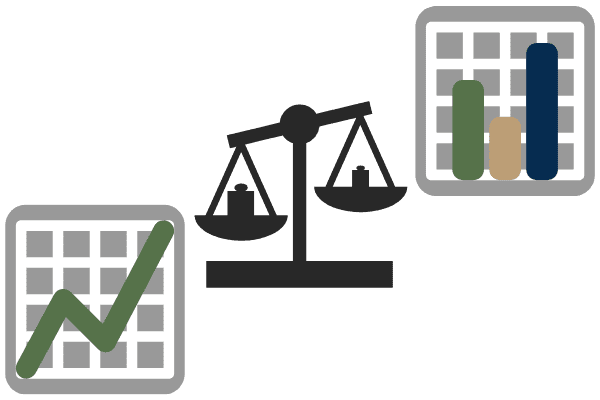
Once you have your goals set and know which metrics to track, you’ll need to analyze the data you collect to see which tactics are helping you reach your goals and which could be amplified, tweaked, or pitched all together. So how do you know if a tactic is working?
Start tracking and analyzing your key metrics immediately and on a regular basis. You should start to see your numbers fluctuate and if everything goes right, results will start to consistently increase. Whether those numbers are website visits, lead submissions, or social media engagements, as long as the numbers are increasing, you’re probably doing alright. However, if your numbers are stagnant or decreasing, it may be time to look more closely at your tactics and decide what you can do to get your numbers back on track.
Even if your numbers are increasing, experimenting with different tactics can uncover diamonds in the rough. For example, maybe you started blogging and you’re seeing website traffic numbers increase, just like you were hoping they would. That’s great news, but maybe you can optimize other areas of your site by focusing on conversion rate disparities, non-performing Call-To-Actions on blogs, or decreasing bounce rates with internal linking strategies.
Now that you have the knowledge you need to consider digital marketing for your home building or remodeling business you can get started on the process and start pushing toward your goals in the digital space. Remember, digital marketing is a long term strategy that requires discipline, and it will be well worth it for the future of your business in the digital age.
If you’re worried about the costs of inbound marketing, this page has everything you need to know about the average costs of inbound marketing, item by item.
If you’re sold on the idea of digital marketing, but don’t have the time or man power to implement the items that will move the needle, consider hiring a dedicated inbound marketing team to help you with the ideation, creation, and implementation of digital marketing campaigns to reach your business goals. Here at Builder Funnel, we’ve helped dozens of home builders and remodelers reach and surpass their goals through digital marketing services and sales enablement. If you’d like to work with Builder Funnel or learn more about how we can help your business succeed, apply to work with us!